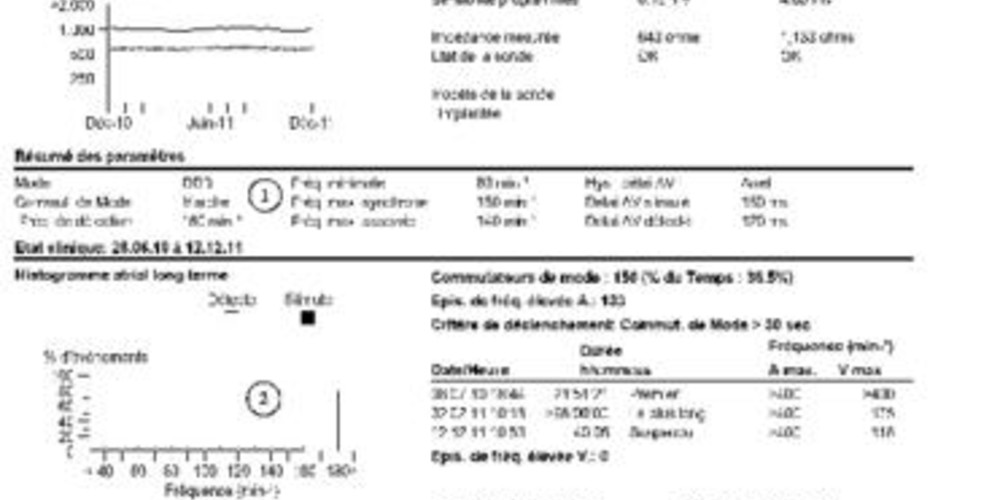Automatic rate response after mode switching
Tracing
Manufacturer Medtronic
Device PM
Field Programming for exercise
N° 26
Patient
64-year-old man with complete atrioventricular block implanted with an Adapta pacemaker; grade II mitral regurgitation; routine control; asymptomatic patient.

Graph and trace
- programming in DDD mode without rate response;
- the atrial histogram shows that the patient has gone into persistent atrial fibrillation;
- the ventricular histogram shows a rate response of the paced ventricles with satisfactory distribution of the rate curves.
Other articles that may be of interest to you







This patient is initially programmed in DDD mode without rate response. The maximum rate responsive frequency corresponds to the rate response occurring after mode switching due to atrial arrhythmia. The atrial histogram shows continuously high rates corresponding to atrial fibrillation (confirmed on the surface electrocardiogram). The pacemaker has switched to DDIR mode explaining the ventricular histogram showing a proper rate response (a switch in DDI mode would have led to fixed-rate pacing at the minimum rate). This interrogation of the pacemaker raises a number of questions: